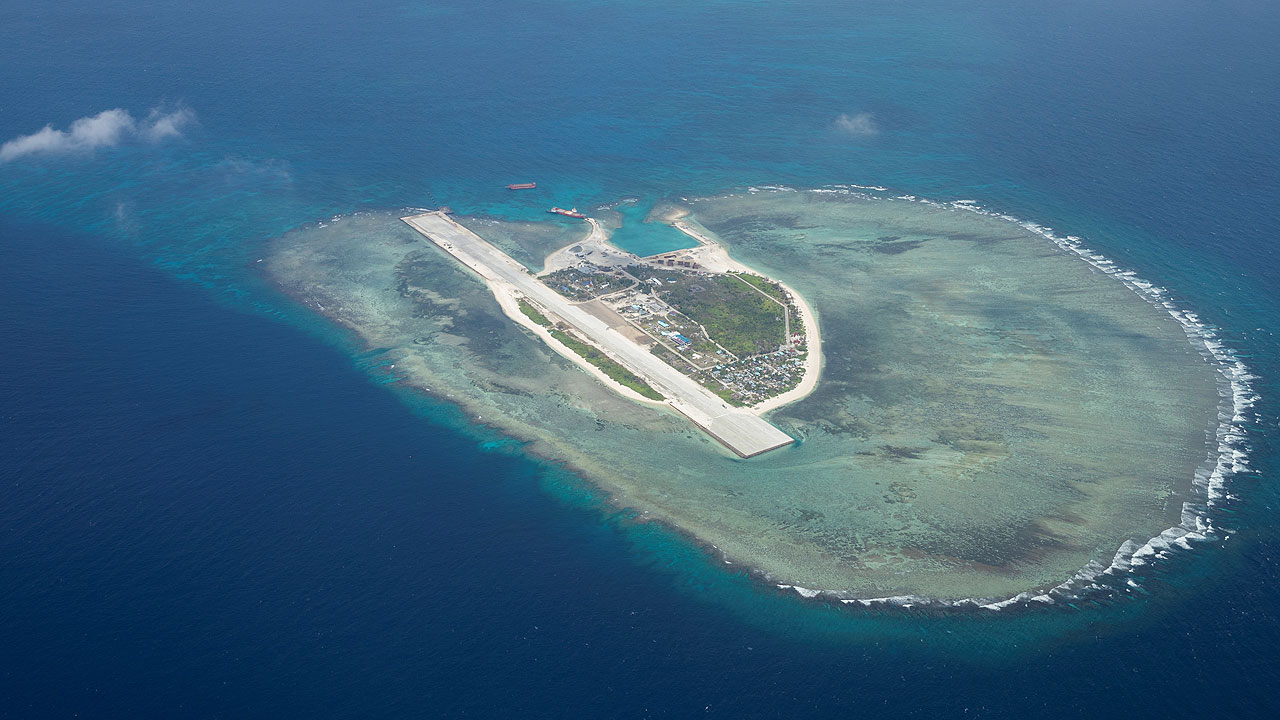PHL eyes environmental probe after Chinese ship runs aground off Thitu

THE Philippine Coast Guard (PCG) on Monday said it would assess the reef damage caused by a Chinese maritime ship that ran aground in shallow waters off Thitu Island in the South China Sea at the weekend.
“The PCG, in collaboration with other relevant organizations, is preparing to carry out an environmental damage assessment on the reef caused by the unlawful presence of the Chinese Maritime Militia in the Philippines’ territorial waters,” it said in a statement.
“The goal of this assessment is to evaluate any potential ecological impacts resulting from this situation,” it added.
The Chinese Embassy in Manila did not immediately reply to a Viber message seeking comment.
The PCG said a Chinese Navy vessel with bow number 16838 had run aground at Pagasa Reef 1 about one nautical mile near Thitu Island, which the Philippines has occupied since 1971, on June 7.
“The Chinese vessel was likely driven into the shallow area due to adverse sea conditions, characterized by wave heights of two to three meters and strong winds,” it said.
Coast guard personnel stationed at the island contacted the grounded Chinese vessel to evaluate its condition and help it move to deeper water.
“Unfortunately, the vessel did not respond to the PCG’s inquiries,” it said. “After approximately three hours, the vessel was able to free itself without external assistance.”
The PCG said a China Coast Guard vessel had communicated with the grounded ship but did not approach it for fear that it could also be stranded in the shallow waters.
Thitu Island, which the Philippines calls Pag-asa, is the second-biggest island in the disputed Spratly Islands, which China, Taiwan and Vietnam claim in their entirety. The Philippines, Malaysia and Brunei claim parts of the islands.
The Philippines has a military outpost on Thitu Island, where a small Filipino community has lived there since 1971.
A United Nations-backed tribunal based in The Hague in 2016 voided China’s claim to more than 80% of the South China Sea for being illegal.
Manila and Beijing have repeatedly clashed in the disputed waterway, with both sides accusing each other of raising tensions.
Political analysts at the weekend said the Philippines should use if chairmanship of the Association of Southeast Asian Nations (ASEAN) next year as a platform to raise its voice on security issues in the region, including disputes in the South China Sea.
ASEAN Summit meetings could be used as a launchpad for bilateral negotiations with China on a separate Code of Conduct (CoC) in the waterway if regional consensus remains elusive, said Josue Raphael J. Cortez, a diplomacy lecturer at the De La Salle-College of St. Benilde. A pan-ASEAN-China CoC may take time, he added.
“However, since we are the primary stakeholders in this quest, we can explore the possibility of forging first a bipartite/bilateral treaty with China, and we can use the ASEAN meetings next year as a platform to do initial discussions on how this can be forged,” he said.
Rommel C. Banlaoi, president of the Philippine Society for International Security Studies, said China has agreed to conclude negotiations for a legally binding CoC in the South China Sea by 2026.
“Its conclusion will depend on the details of the CoC, as the devil is always in the details,” he said in a Viber chat.
As chairman of the regional bloc next year, the Philippines could propose items in the coming ASEAN summits but noted that it has no control over the outcomes since the bloc works on a consensus, he added.
During the 46th ASEAN Summit in Kuala Lumpur last month, Philippine President Ferdinand R. Marcos, Jr., urged his fellow leaders to fast-track the adoption of a legally binding South China Sea CoC, warning that rising sea tensions and uncertainty threaten hard-won regional gains.
The South China Sea remains one of the region’s most volatile flashpoints given competing claims over it by China, the Philippines, Vietnam, Malaysia, Brunei and Taiwan.
While ASEAN and China agreed to work on a Declaration of Conduct in 2002, progress toward a binding framework has been repeatedly delayed by legal, political and strategic differences.
The Philippines and China marked the 50th anniversary of their diplomatic relations on June 9.
Formal relations started in 1975, when the late President Ferdinand E. Marcos, Sr. signed a joint communiqué with Chinese Premier Zhou Enlai in Beijing, making the Philippines as one of the first Southeast Asian nations to normalize ties with Beijing amid the Cold War. — A.H. Halili



